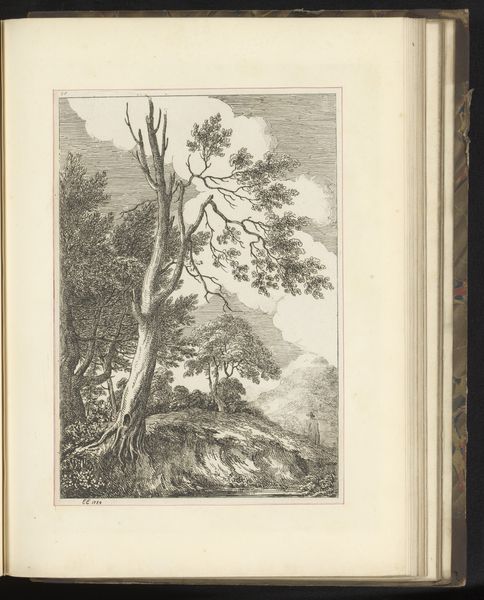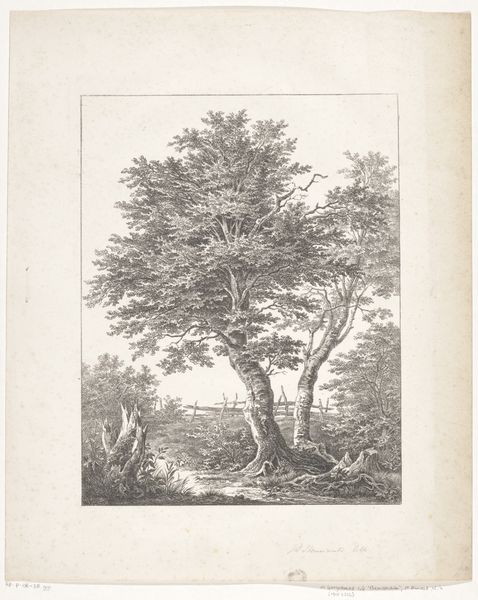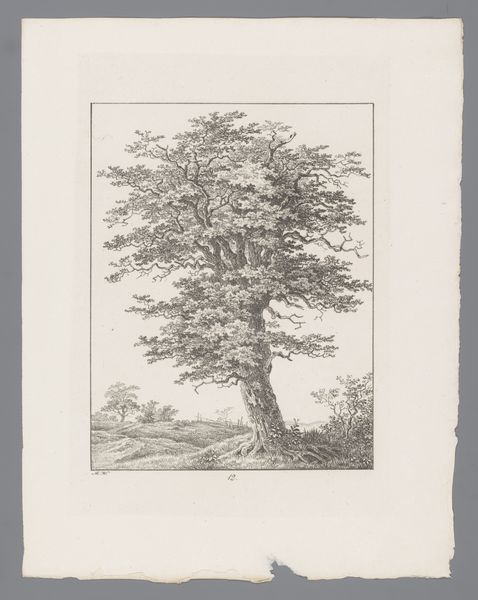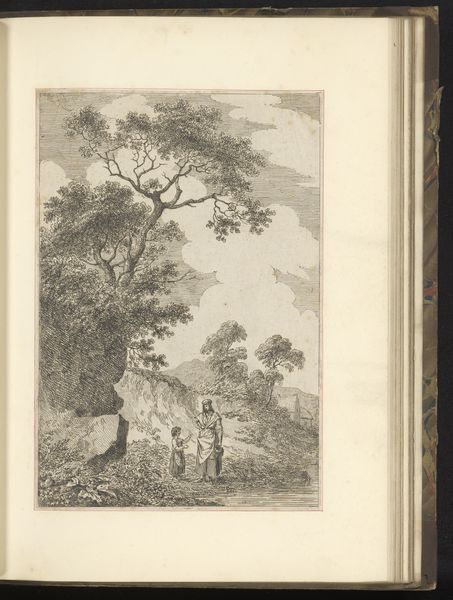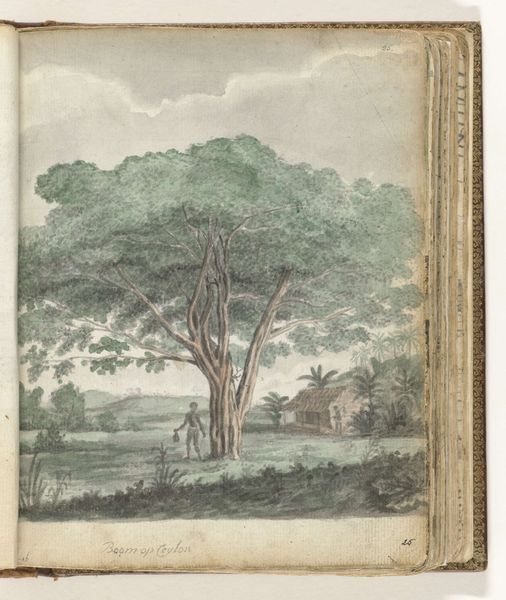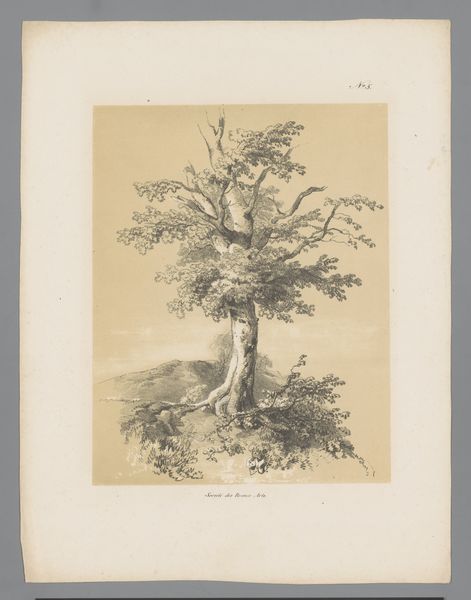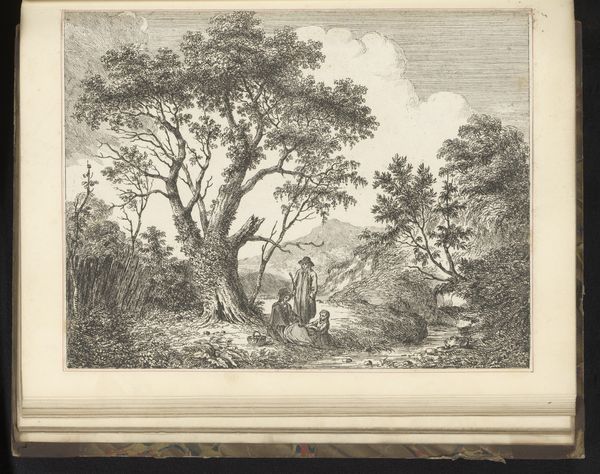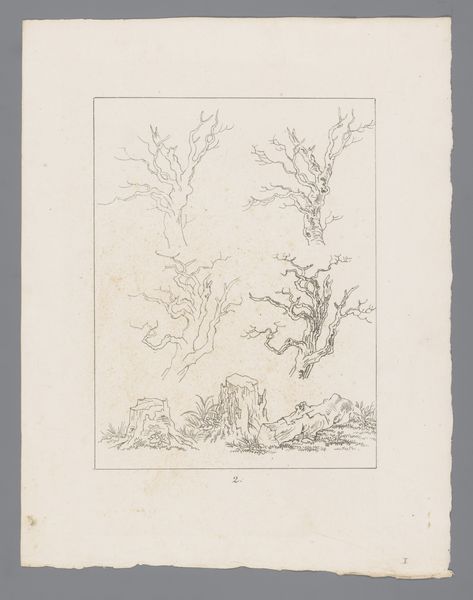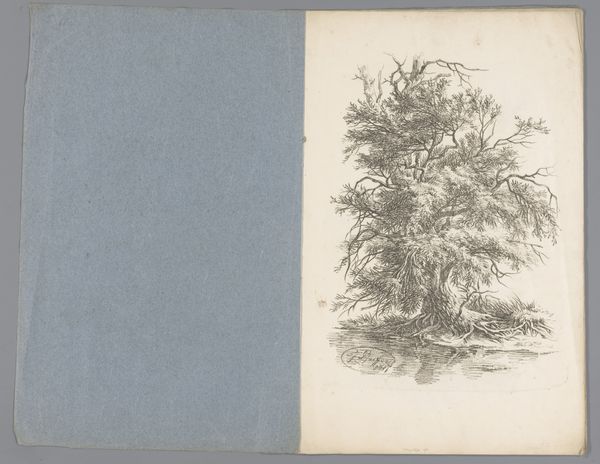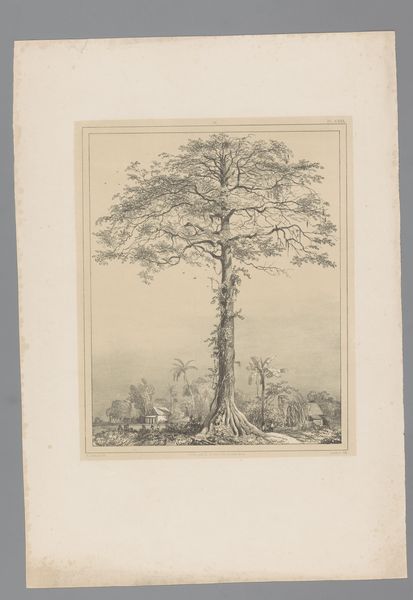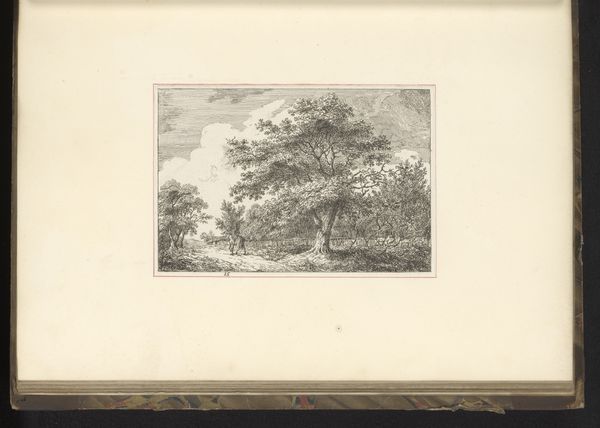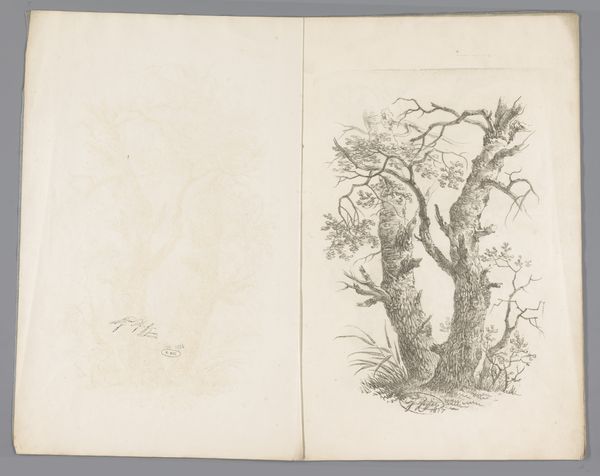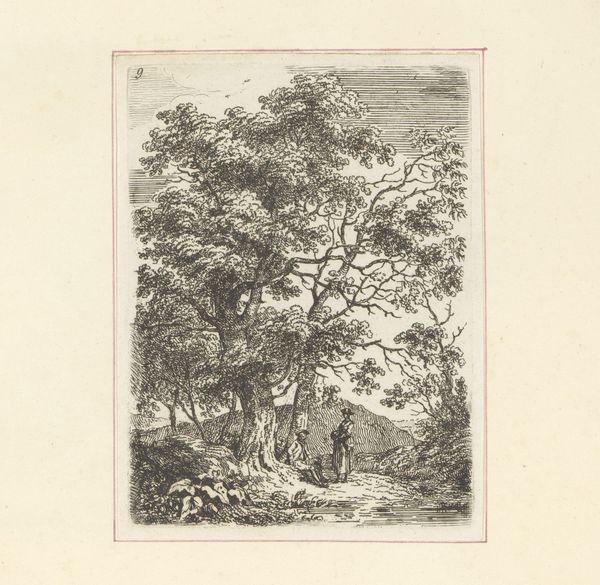
Dimensions: height 192 mm, width 142 mm
Copyright: Rijks Museum: Open Domain
Curator: Editor: Here we have Edward Edwards' "Landscape with a Resting Traveler by a Tree," dating roughly from 1748 to 1806. It looks like pen, ink and etching on paper. I'm really drawn to the meticulous detail, and the contrast between the dense tree and the vast, almost empty, sky. How would you interpret this landscape? Curator: I see a careful articulation of class through materials and technique. Etching, and particularly the labor-intensive detail achieved here, speaks to a particular kind of patronage and leisure. Who had the time, the materials, and the need for such a delicate depiction of the countryside? Consider the intended consumer of this image – was it the traveler resting under the tree? Unlikely. It’s aimed at someone who appreciates the *idea* of rural leisure, not necessarily its reality. Editor: So, the artwork's value is not in the scenery, but the means used to depict that scenery? Curator: Exactly! The very *making* of this landscape signifies wealth and status. Think about the etcher’s tools, the paper itself, the inks—these materials represent a flow of resources. Also, note the mass production via etching allows the circulation of this vision of leisure. It becomes a commodity itself, doesn't it? What social narrative does the scene help sell? Editor: Perhaps an idyllic, untroubled rural life, removed from the industrializing cities. Was the choice of this easily reproducible format—etching—an explicit attempt to reach a broader consumer base? Curator: Undoubtedly. And, consider how that dissemination shapes the perception and even the *experience* of the landscape for those who could never actually own land. It creates a visual language around ideas of nature, class, and even national identity. Editor: So, beyond the immediate image, this etching tells a story of consumption, labor, and societal values... that is amazing! I definitely understand it on a deeper level now. Curator: And hopefully, you can extend those questions of materiality to other works, seeing them not just as images, but as products embedded in a network of social and economic relationships.
Comments
No comments
Be the first to comment and join the conversation on the ultimate creative platform.
